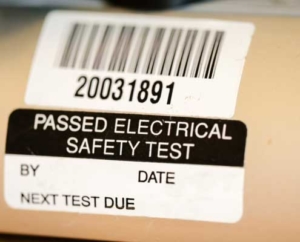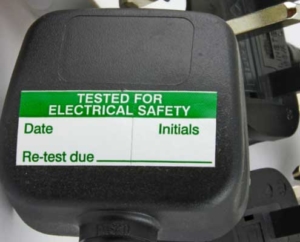Why is PAT Testing Necessary?
Portable Appliance Testing. Electrical appliances are a modern luxury, but one which has become increasingly essential as technology marches on and our lives become more digital. However, despite these advances in technology, electricity remains a dangerous force. Therefore, we need to ensure that our electrical appliances are safe to use; this is where PAT testing comes in.
What is PAT Testing?
PAT testing is one of the most commonly recognised electrical testing procedures in the UK. It’s usually qualified out by a qualified electrician, although it’s not a legal requirement as anyone can be trained to carry out PAT tests.
Now, you may be wondering:
“what does PAT testing actually test?”
So let’s take a closer look at it. In its simplest definition, PAT testing consists of a series of tests which are used to evaluate the safety of electrical appliances. And if you want to know what should be PAT tested, then the answer is even simpler: anything with a plug.
PAT testing, however, is slightly more complex in terms of the tests which are carried out, and a PAT testing checklist should include:
- Checking for damage: Plugs, cables and appliances will all be examined to detect any signs of visible damage which could cause a safety risk e.g. split cables with exposed wires.
- Electrical tests: using a portable appliance tester, the individual completing the PAT test will check:
- Lead polarity
- Insulation resistance
- Earth continuity
Once these tests have been completed, either a PASS or FAIL sticker will be generated for the appliance. If an appliance fails the PAT test, then it needs to be disconnected immediately until it has been repaired.
The Legal Requirements of PAT Testing
PAT testing is, itself, not a specific legal requirement. Nonetheless, it is highly advisable for employees to carry out regular PAT testing. After all, a requirement of the Electricity at Work Regulations (1989) is that electrical equipment needs to be maintained to be deemed safe. And PAT testing provides the perfect platform for ensuring equipment is safe. Therefore, it can be seen to contribute towards maintaining electrical equipment and protecting your employees.
How often is PAT testing required UK?
Many UK employers find themselves asking “how often is PAT testing required?” and it’s a good question as it’s not deemed a legal requirement. However, it’s always useful to run a risk assessment on equipment to determine how likely it is that faults could occur. If, for example, you mostly have office equipment which needs testing, then a yearly test will most likely suffice. But heavy duty equipment, such as that found on construction sites, is more likely to experience wear and tear, so more regular checks (from monthly to quarterly tests) may be necessary.
Electricity is an important element when it comes to running a business, but it’s also one which needs to be handled and monitored carefully. PAT testing isn’t the only form of electrical testing that, as an employer, you should be carrying out, but it is one of the most important ones. Therefore, always team up with professional electricians to complete essential PAT testing.
PAT Testing Checklist
For more information on PAT testing and the current practice please read our article on PAT Testing regulations or view the blog category





